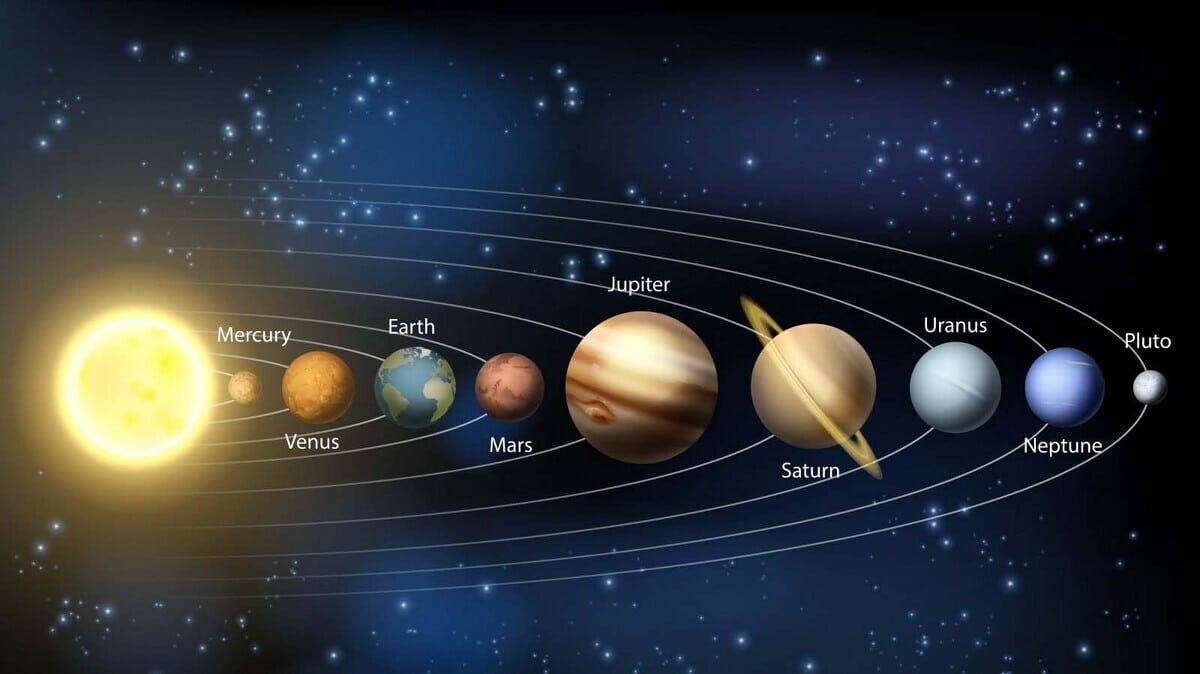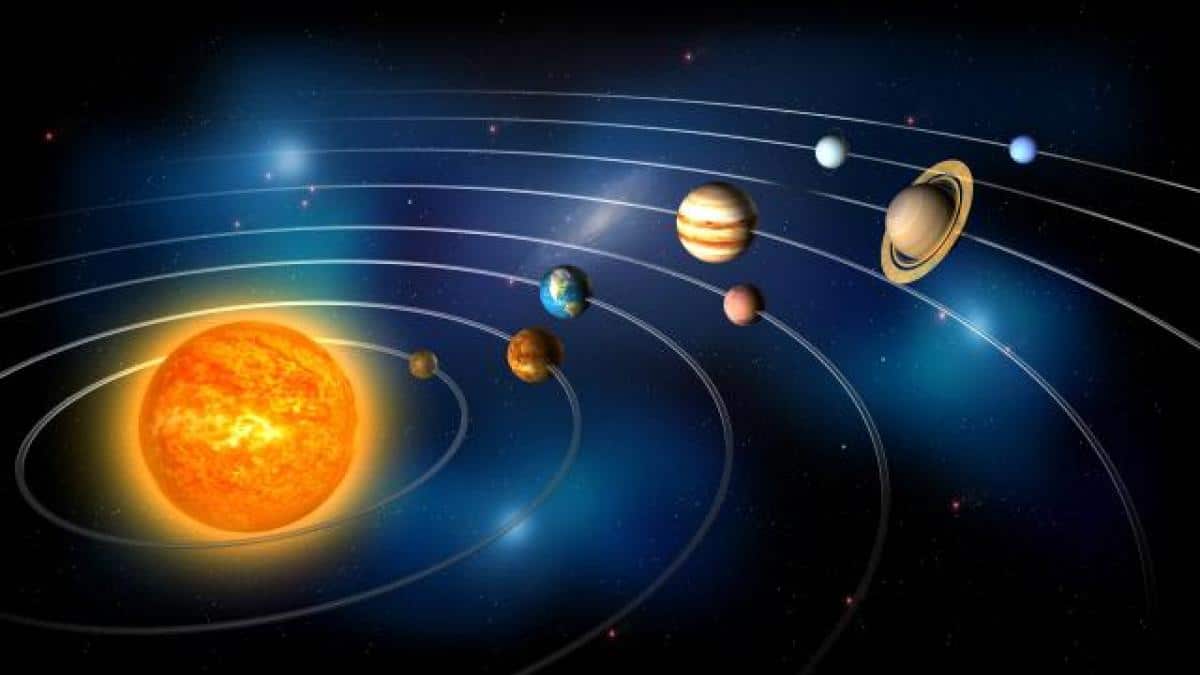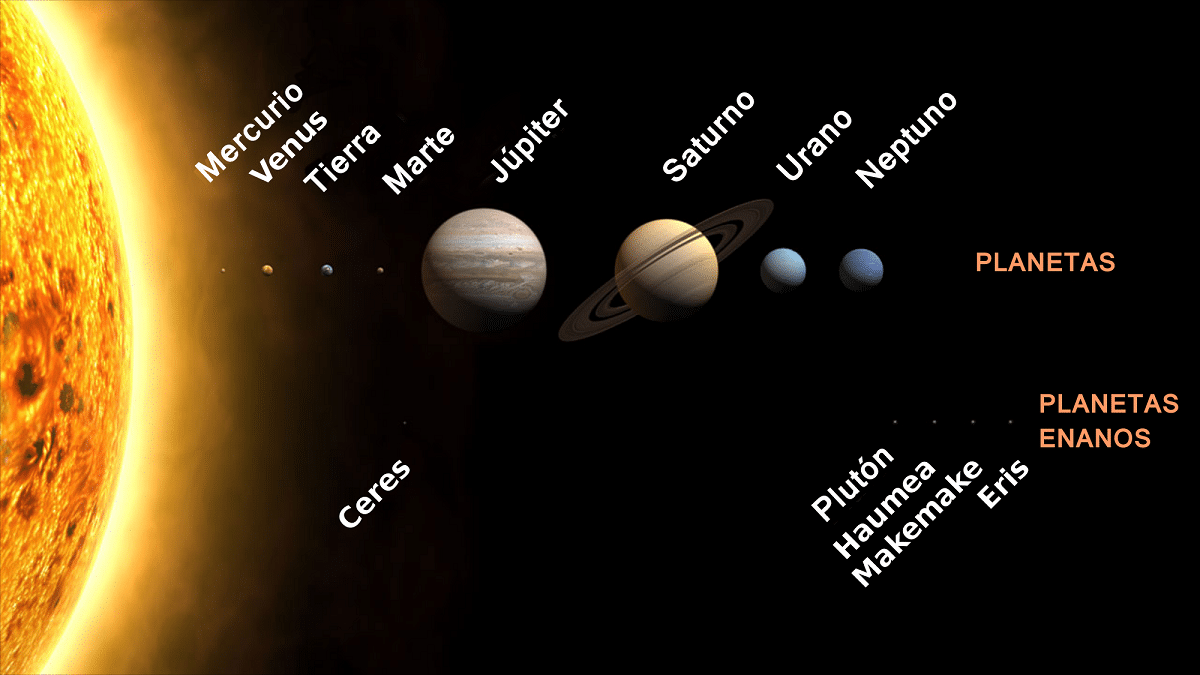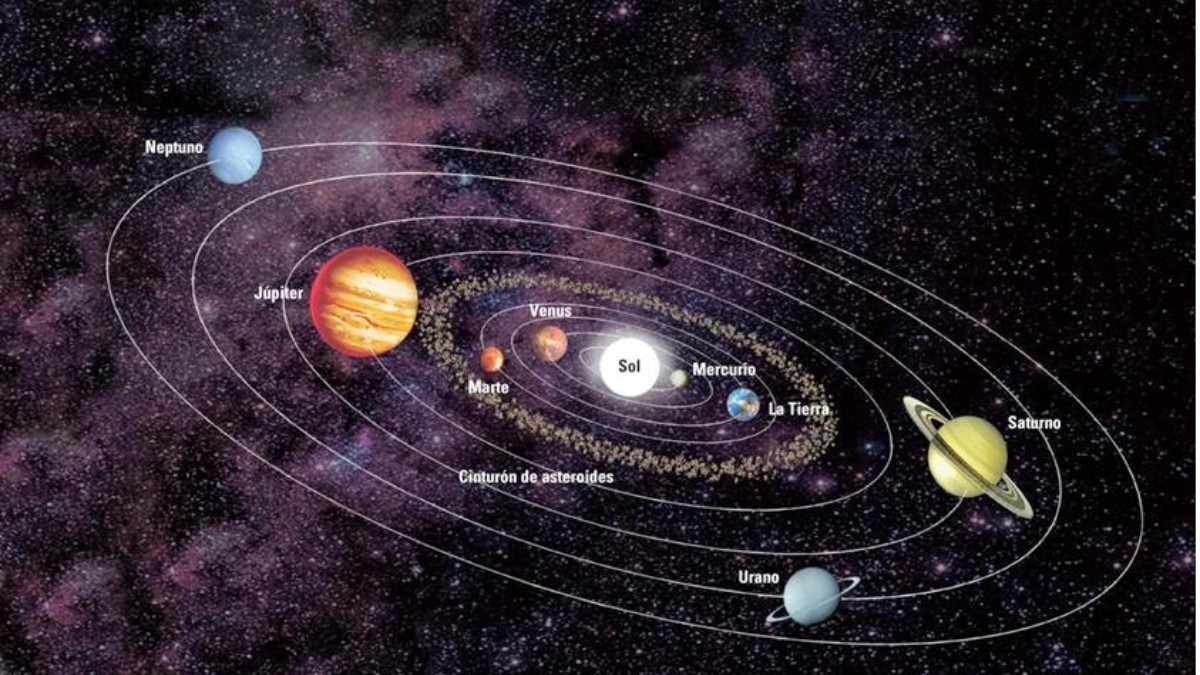
El solar system It is made up of planets and asteroids that rotate around a single star that is the consistency of everything. The star is known as the sun. We all know the planets and celestial bodies that revolve directly or indirectly around the sun, but there are many doubts regarding the order of the planets. When we speak of the order of the planets we do not refer to the distance at which each celestial body rotates on the sun.
Therefore, we are going to dedicate this article to tell you everything you need to know about the order of the planets.
Formation of the solar system

We know that the solar system is made up of all the planets that revolve around the sun. Notably was formed approximately 4.600 billion years ago because of a gravitational collapse that occurred in a giant molecular cloud. This event led to the formation of other billions of stars, the number of which is still unknown. There are many scientists who study all the characteristics of the solar system to know the order of the planets in addition to other fundamental characteristics.
Among the main elements that give shape and life to the solar system are the major and minor planets. There are some elements such as stardust, interstellar gas, satellites and asteroids that are also part of the solar system. The whole set of these elements forms what we know as Milky Way. The Milky Way is made up of billions of stars and the solar system is located in one of the arms that it is called Orion.
Among the main characteristics that we have of the solar system we have that the sun accounts for 99% of the total mass of the system since it has a diameter of 1.500.000 kilometers. The rest of the planets are divided into several types known as inner planets y Outer planets. There are numerous planets that have rings and other dwarf planets that are in a category as smaller celestial bodies. In this case, we go to Pluto in the group of Tiny planets.
Another important element in the formation of the solar system are satellites. They are bodies with a larger size and that orbit around a planet larger than it. Planets like Jupiter have numerous satellites or on the contrary, we have our planet that it only has the moon as a satellite. We found the Little Brothers of the satellites known as asteroids found in the asteroid belt. That center is between Mars y Jupiter. This belt is made up of frozen, liquid, gaseous objects, cosmic dust, meteoroids and comets. They represent the rest of the elements that exist in the solar system.
The three categories of the order of the planets

We are going to establish the different categories by which the order of the planets is established. To better understand this system, scientists have decided to classify the solar system into three categories. Let's analyze each one of them:
- First category: In this category the eight planets that make up the solar system are indicated. We point to terrestrial planets such as Earth, Mars, Venus y Mercury. These 4 planets are known as inner planets. On the other hand, we have the planets that have satellites that orbit around them and are Neptuno, Uranus, Jupiter and Saturn. They are considered as outer planets.
- Second category: here are the so-called dwarf planets. Dwarf planets are celestial bodies that also orbit the sun and that have a spherical shape. However, its mass is not sufficient to be able to clear the vicinity of its orbit. From here the reason for the nomenclature is derived. Some of the dwarf planets that make up this category are Ceres, Eris, Haumea, Pluto and Eris. Pluto was previously considered a planet of the first category.
- Third category: here are included the so-called minor bodies of the solar system. They are all the remaining objects that we have mentioned in the previous categories. It is made up of asteroids, all objects that circulate in the Kuiper belt, meteoroids, and some icy comets.
Order of the planets

The order of the planets is established according to the distance at which they orbit around the sun. We are going to delve in more detail about each of them. We are going to list in order from closest to furthest that it orbits the sun. We are also going to mention some of the main characteristics that each planet has.
- Mercury: This planet is the closest to the sun. Although it is the smallest that others it has a resemblance to our planet. Its composition is 70% of metallic elements and the rest of silicates.
- Venus: The number two position in terms of distance from the sun. Venus is named after Earth's Brother planet because it has a great resemblance. Its mass and rocky melt composition resembles ours.
- Earth: It is the largest of the so-called rocky planets and was formed 4600 billion years ago. 71% of the planet is made up of water. This fact has differentiated the fundamental characteristics of the planet with respect to others. And it is that water is what has determined the existence of life.
- Mars: It is the second in size of the rocky planets and the fourth in distance from the sun. It has been known as the red planet for a long time because of the reddish color it has on the surface. This color is due to the iron oxide that covers most of its surface.
- Jupiter: It is part of the gas giants that gets its name from the God Zeus of Greek mythology. It is already 1300 larger than the size of Earth and is considered the oldest planet in the solar system.
- Saturn: It is the most famous planet in the solar system for its ring. It was first found in 1610 and most of its surface is made up of hydrogen and the rest of ice.
- Uranus: It is a planet considered one of the first to be discovered by a telescope. Its particularity of its atmosphere. It reaches temperatures of -224 degrees Celsius.
- Neptuno: It is composed of molten rock, water, methane, hydrogen, ice and liquid ammonia and was discovered in the year 1612.
I hope that with this information you can learn more about the order of the planets and the characteristics of the solar system.